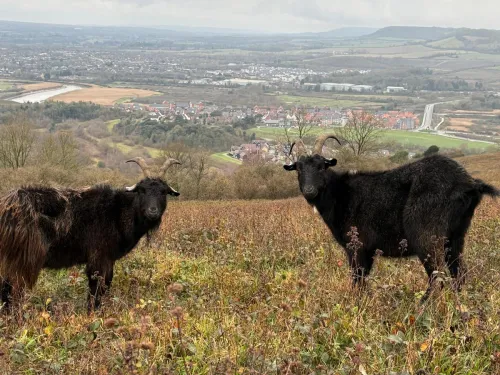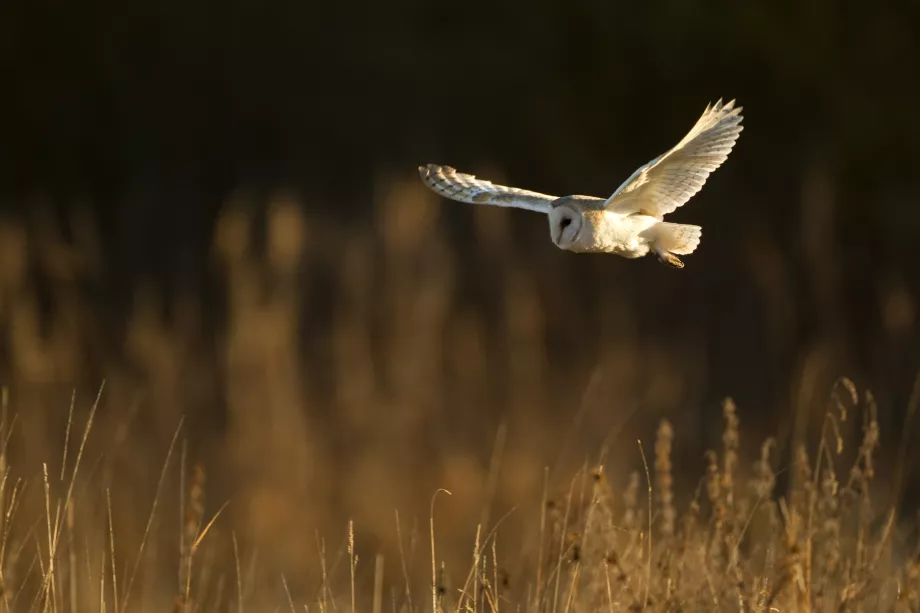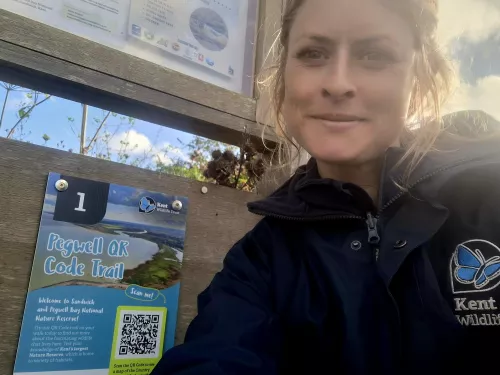
It’s the “Goat” of Christmas past
Rangers celebrate “Christmas miracle” as escaped goat returns after three-month adventure


Barn owl. Credit: Danny Green
However, owl nest boxes can provide a reliable way to monitor the presence of barn owls on a site, whilst also providing a nice safe nesting area for barn owl pairs to raise their young.
Barn owls in Britain are most commonly associated with rough tussocky grassland with high densities of small mammals. Add a well-placed barn owl box and Hothfield Heathlands becomes an ideal spot for these birds to live.
Barn owls swallow their prey whole, and then spit out the hair and bones in the form of neat thumb sized pellets. These pellets build up quickly in the nest box, and cleaning every 2-3 years is required.
Over the winter, Kent Wildlife Trust’s Ian Rickards and a few volunteers braved the task of spring cleaning the nest box (this is the best time of year to do this so as not to disturb breeding pairs and young). We removed 3 buckets full of material, but left a layer of old pellets in the bottom of the box.
The parent owls will pull apart these old pellets to make the nest more comfortable.
Owl pellets are a mixture of fur, bone and other indigestible material that the Barn owls consume then regurgitates in a dry “pellet” form. At a close glance, the bones found within pellets can reveal a lot about the Barn owl’s dietary habits and requirements. Their main choice of prey is the field vole, however any small mammals are taken.
The number of prey items needed to sustain an adult breeding pairs is, in short, quite a lot.
The Barn Owl Trust has estimated that through the course of a year, a pair will consume around 4,000 prey items therefore it is critical that their habitat supports a large number of small mammals.
Our work at Hothfield Heathlands has already shown to benefit small mammal species (harvest mice for one!)). The conservation grazing program on site has been key to this.
The cattle in particular are extremely beneficial in the maintenance of rough grassland as they tend to graze in pockets, leaving some areas to grow long, whilst keeping the overall grass length high. The long grass and bramble patches create the perfect habitat to support abundant small mammal number through the provision of food and nest materials.
Now that the box clean is done, it is now down to us to carry on our habitat restoration successes to keep our small mammals. That in turn will ensure our barn owls continue to use the Hothfield nest box for many seasons to come!
To find out more about Kent’s barn owls, and how you can help protect them, contact Kent Wildlife Trust on 01622 662012.
Written by Hollie Weatherill

Rangers celebrate “Christmas miracle” as escaped goat returns after three-month adventure

Terrified cows being chased by teenagers, litter strewn over nature reserves, and the inevitable onslaught of mass pumpkin dumping in the woods – as Halloween approaches, Wardens at Kent Wildlife Trust head for their litter pickers in a bid to combat the…

Signage with scannable QR codes has been installed to help people learn about nature and raise awareness of specially protected wildlife areas after a spate of incidents